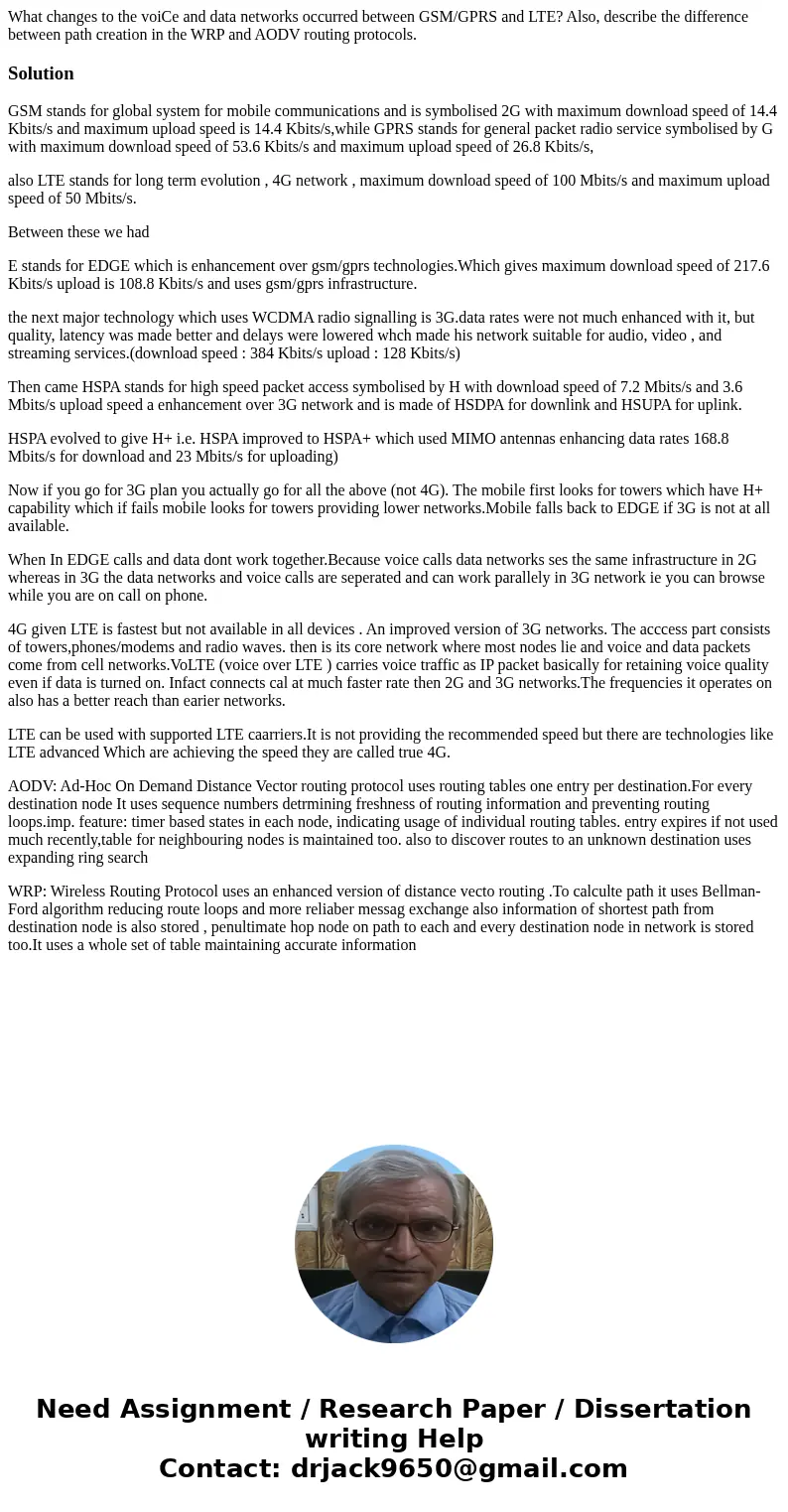What changes to the voiCe and data networks occurred between
What changes to the voiCe and data networks occurred between GSM/GPRS and LTE? Also, describe the difference between path creation in the WRP and AODV routing protocols.
Solution
GSM stands for global system for mobile communications and is symbolised 2G with maximum download speed of 14.4 Kbits/s and maximum upload speed is 14.4 Kbits/s,while GPRS stands for general packet radio service symbolised by G with maximum download speed of 53.6 Kbits/s and maximum upload speed of 26.8 Kbits/s,
also LTE stands for long term evolution , 4G network , maximum download speed of 100 Mbits/s and maximum upload speed of 50 Mbits/s.
Between these we had
E stands for EDGE which is enhancement over gsm/gprs technologies.Which gives maximum download speed of 217.6 Kbits/s upload is 108.8 Kbits/s and uses gsm/gprs infrastructure.
the next major technology which uses WCDMA radio signalling is 3G.data rates were not much enhanced with it, but quality, latency was made better and delays were lowered whch made his network suitable for audio, video , and streaming services.(download speed : 384 Kbits/s upload : 128 Kbits/s)
Then came HSPA stands for high speed packet access symbolised by H with download speed of 7.2 Mbits/s and 3.6 Mbits/s upload speed a enhancement over 3G network and is made of HSDPA for downlink and HSUPA for uplink.
HSPA evolved to give H+ i.e. HSPA improved to HSPA+ which used MIMO antennas enhancing data rates 168.8 Mbits/s for download and 23 Mbits/s for uploading)
Now if you go for 3G plan you actually go for all the above (not 4G). The mobile first looks for towers which have H+ capability which if fails mobile looks for towers providing lower networks.Mobile falls back to EDGE if 3G is not at all available.
When In EDGE calls and data dont work together.Because voice calls data networks ses the same infrastructure in 2G whereas in 3G the data networks and voice calls are seperated and can work parallely in 3G network ie you can browse while you are on call on phone.
4G given LTE is fastest but not available in all devices . An improved version of 3G networks. The acccess part consists of towers,phones/modems and radio waves. then is its core network where most nodes lie and voice and data packets come from cell networks.VoLTE (voice over LTE ) carries voice traffic as IP packet basically for retaining voice quality even if data is turned on. Infact connects cal at much faster rate then 2G and 3G networks.The frequencies it operates on also has a better reach than earier networks.
LTE can be used with supported LTE caarriers.It is not providing the recommended speed but there are technologies like LTE advanced Which are achieving the speed they are called true 4G.
AODV: Ad-Hoc On Demand Distance Vector routing protocol uses routing tables one entry per destination.For every destination node It uses sequence numbers detrmining freshness of routing information and preventing routing loops.imp. feature: timer based states in each node, indicating usage of individual routing tables. entry expires if not used much recently,table for neighbouring nodes is maintained too. also to discover routes to an unknown destination uses expanding ring search
WRP: Wireless Routing Protocol uses an enhanced version of distance vecto routing .To calculte path it uses Bellman-Ford algorithm reducing route loops and more reliaber messag exchange also information of shortest path from destination node is also stored , penultimate hop node on path to each and every destination node in network is stored too.It uses a whole set of table maintaining accurate information

 Homework Sourse
Homework Sourse